by Kristen Minogue
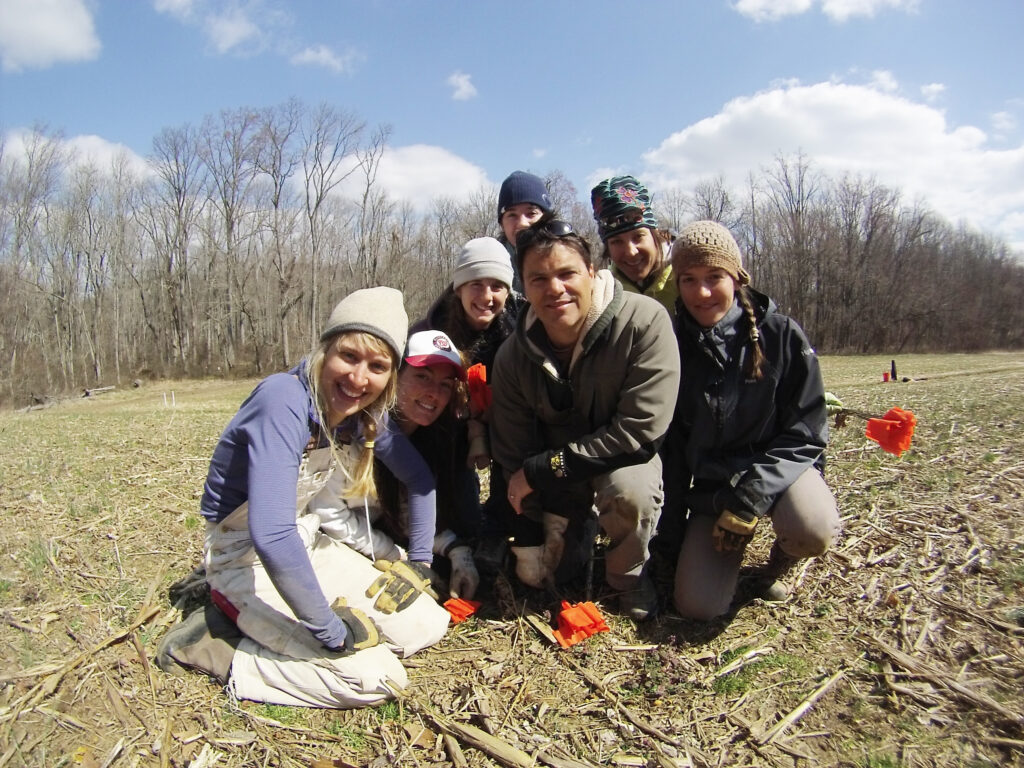
An Irish-Canadian farmer once told his son that the true meaning of life was to plant trees under whose shade he did not expect to sit. It’s a proverb many altruists and humanitarians have taken to heart, though not all as literally as John Parker.
In March, Parker began planting an entire forest. If things go as planned, that forest will become the longest-running field experiment in SERC’s history—an experiment he will not live to see completed.
His lab works in Watershed 109, an expanse of brown field that grew nothing but corn for the last three decades. The core five-person team consists of Parker, postdoc Susan Cook-Patton, field aids Whitney Hoot and Lada Klimesova, and intern Caitlin Cecil. They’ve been outside overseeing volunteers seven days a week since March 4, with only two days off for harsh weather. One day it rained, sleeted and snowed with winds up to 40 miles per hour. That day wasn’t one of them.
There’s an art to planting saplings, Hoot explains. The holes need to be completely filled with soil so infant trees don’t drown in a well of rainwater. Occasionally they have to trim what Hoot calls “suicidal” trees, whose roots curve upward into a J.
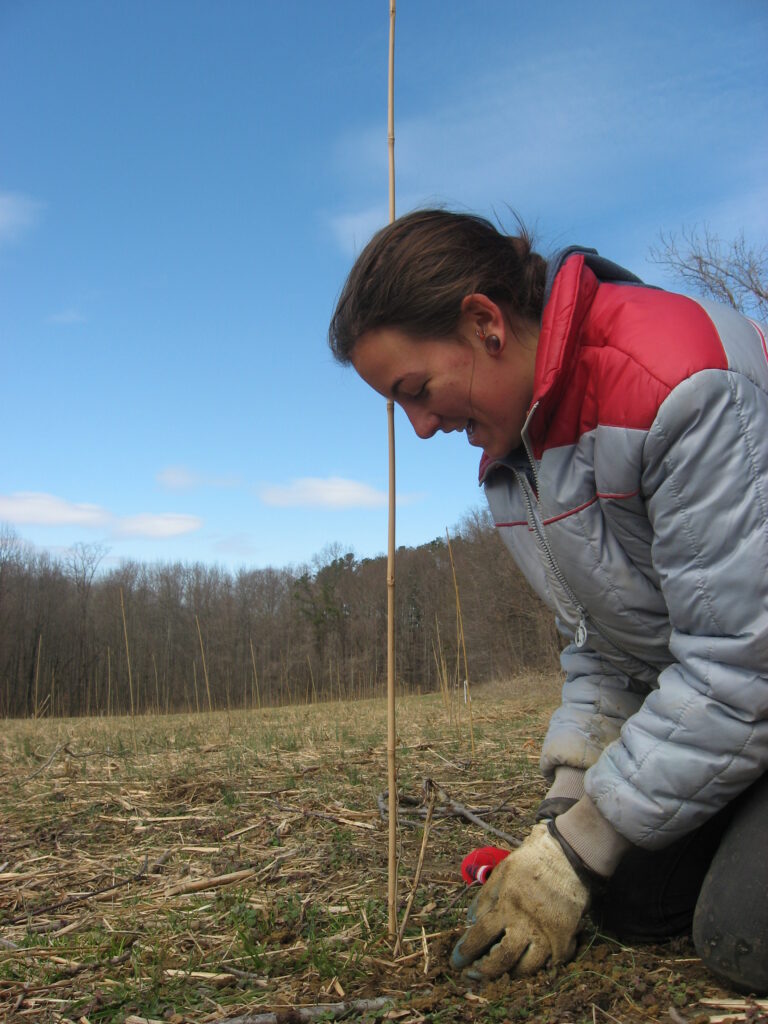
“It will grow along the surface instead of growing down, and it just can’t get enough water,” Hoot says. “And so rather than killing the tree immediately, it will take a couple of years. And that’s really bad for our experiment.”
Then, once they’re in the ground, there’s the matter of watering all 18,000 saplings. “In a perfect world, it would rain every day for 45 minutes and get sunny again, but that ain’t gonna happen,” Parker says.
But the labor pains of birthing the new forest will pass. When they do, Parker and the ecologists after him will have something priceless: the chance to watch it evolve over a century or longer.
Project BiodiversiTREE
The name BiodiversiTREE comes from the key question Parker wants to answer: Is a diverse forest a better forest? Are trees more likely to survive surrounded by other species? Will it shelter more animals? And will it do more for people, filtering out our pollutants and absorbing our carbon?
There’s reason to think it will. Different tree species have different root systems. Grouping them together minimizes competition for water and nutrients—and increases the odds of them stopping harmful chemicals before they reach Chesapeake Bay. Tasty plants stand a greater chance of not getting eaten if they hide among less palatable ones. And a forest with more plants that survive, period, will do a much better job soaking up CO2.
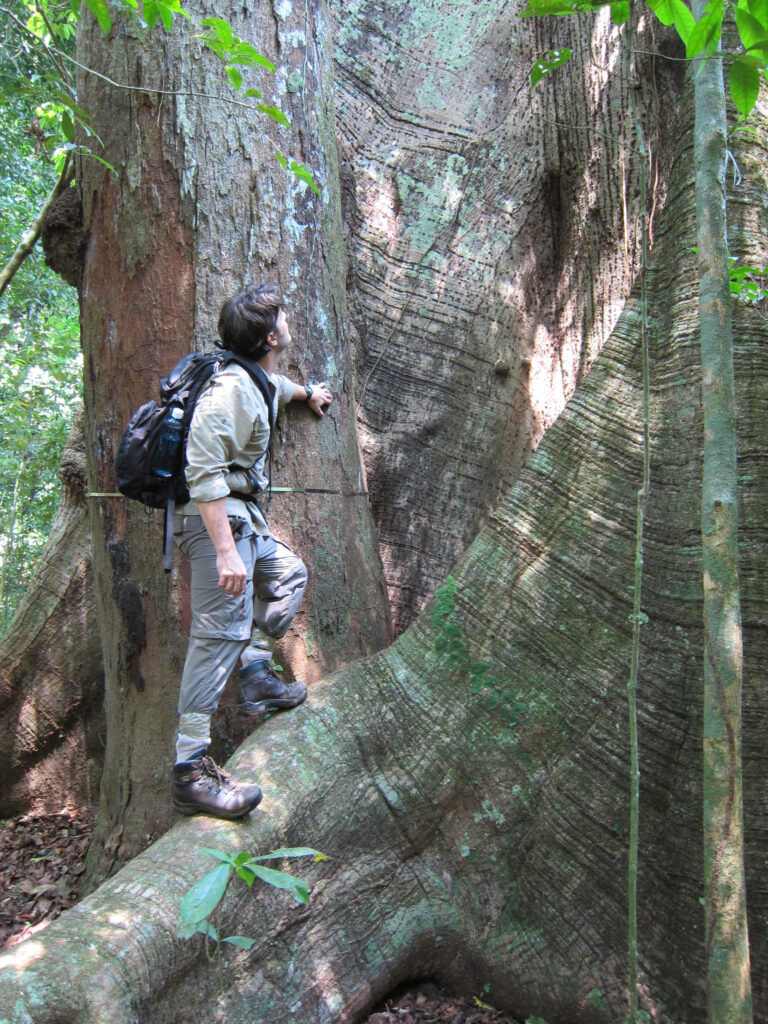
The project is one of just a handful in the world like it, and the largest in North America. The Smithsonian has two experimental forests in Panama. By comparing them, ecologists can find out if diversity matters as much in the temperate zone as it does in the tropics, where researchers have roughly 400 tree species to work with. Perhaps it matters more.
“If you have four hundred, you’ve got a lot of extra rivets to hold that plane together,” Parker says. “Here, you’ve got 30, 35. But if you look at the distribution of species, it’s dominated by two or three.” If just one species falls by the wayside—like the tulip poplar—it could drastically alter the ecosystem.
But to test that, the team needs to design the forest carefully. They have divided the farmland into 35-by-35-meter plots. Each plot can hold 255 trees, and they have 16 species to choose from. Cook-Patton, Parker’s postdoc, is in charge of deciding which trees go where. Some will contain only oak or beech or red maple. Others will contain mixtures of four or 12 different species. And five plots will be left to regrow naturally. By the time it’s finished, a mosaic of 75 forest plots will cover the landscape.
Parker has done similar projects on a smaller scale, with 1 meter-squared plots. His findings back up the pros of diversity. Survival rates for saplings in mixed communities were only slightly higher than in segregated ones (3 percent), but those that lived grew 17 percent larger in a mix. A grasslands project at the University of Minnesota found the same thing: Plants grow better in mixed cultures than monocultures. The whole is greater than the sum of its parts.
Forests Past and Future
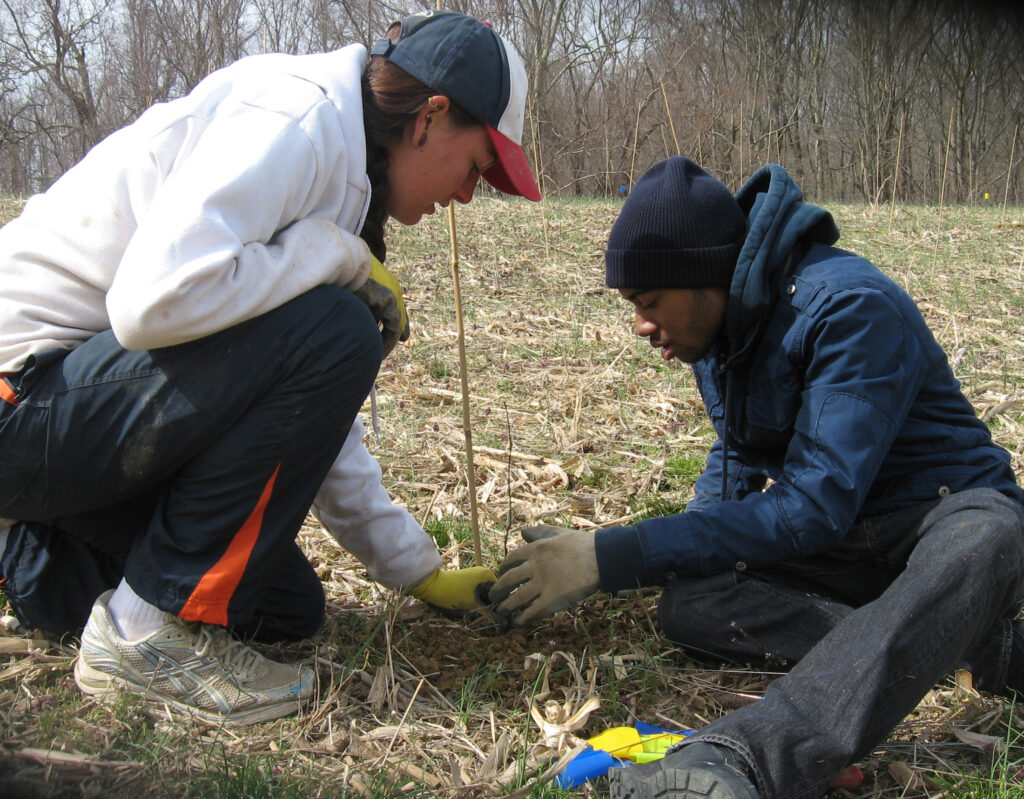
When complete, the saplings will cover 60 acres of former cropland. There will be trees with special goo on their roots to help them absorb water. There will be trees with cages to protect them from deer. Some trees will even get a special “bloodmeal” spray of cow or pig blood, to see if the scent of a kill does a better job scaring off deer. All the while ecologists will track how the 75 mini-forests handle climate change, water pollution and animal communities.
Scientists aren’t the only ones with a stake in the forest. In Anne Arundel County, developers who cut down trees in critical area—land within 1,000 feet of shoreline—have to plant new trees inside the critical area or face a hefty fine. Their third option is to purchase forest mitigation credits. Since virtually all of BiodiversiTree falls within critical area, it can sell those credits in spades. It also can provide credits for animals, called forest interior dwelling species (FIDS) credits.
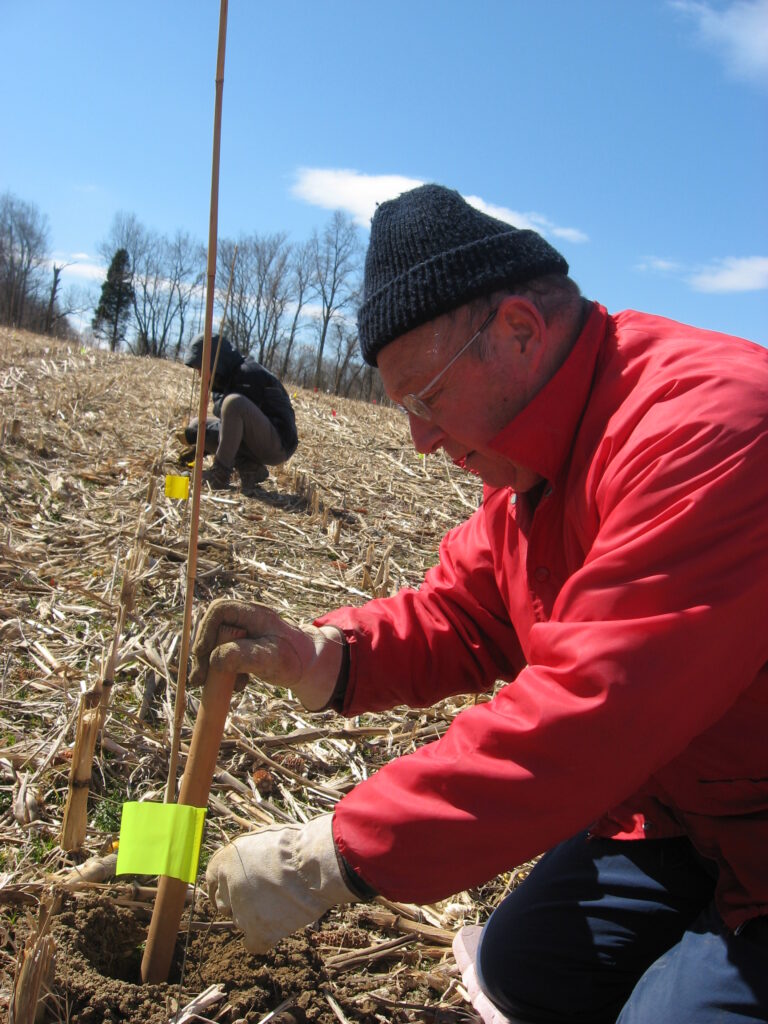
But that is only the first half of the project. Nearby, another 70 acres of forest will remain untouched. As Parker and his successors watch the new forest grow beside it, they will face another question: What legacy does three decades of farming leave in its wake?
“It’s very stressful. I’ve never had a project this big,” Parker says. It isn’t just the immensity of this project on his mind. Parker still lives in the publish-or-perish world of all scholars. Having a century-long field experiment in place doesn’t change that. Still, most academics leave their legacies in journals. “When do you ever get a chance to leave something behind that’s not just words on paper?”
After they finish planting, Parker says he hopes to leave one more thing: A small open space on the edge of the woods with 16 trees, one of each species in the project. The trees will stand in two concentric rings, like Stongehenge. He wants to call it…”Treehenge.”

